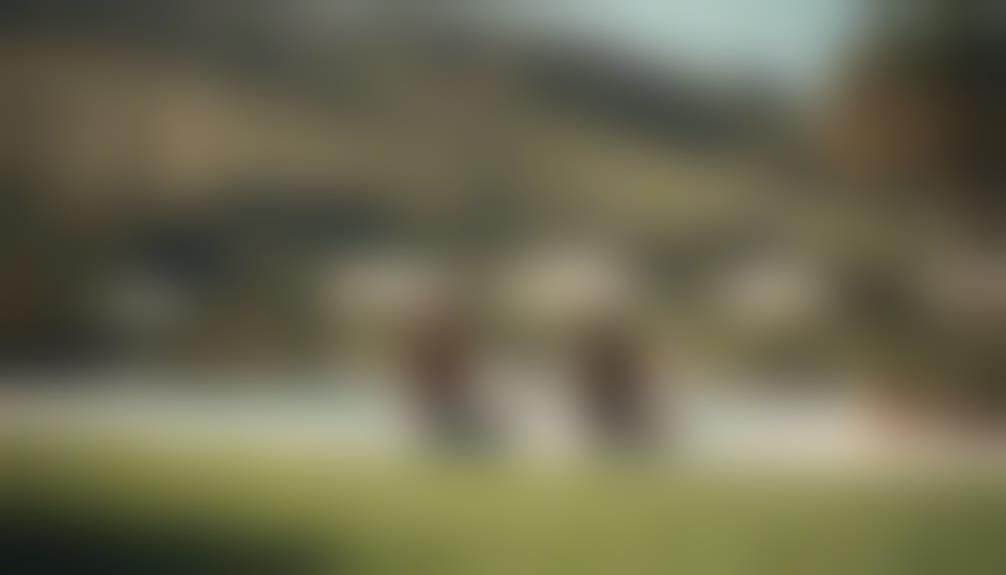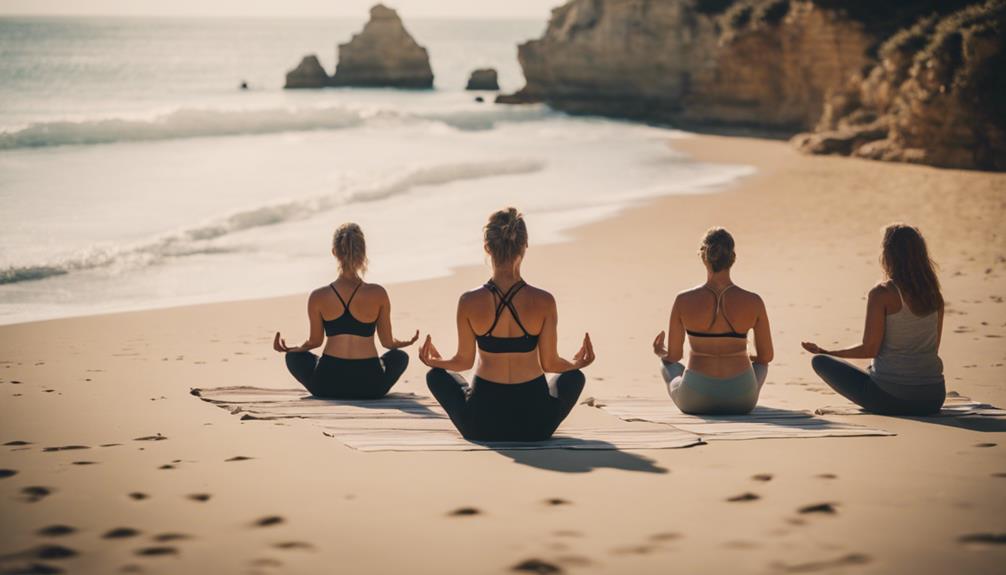Capturing stunning wildlife photos in Algarve's natural parks is an incredible journey that I invite you to join me on. Did you know that Algarve is home to over 300 species of birds, making it a haven for birdwatchers and photographers alike?
As someone who is passionate about serving others and helping them discover the beauty of nature, I am excited to share my tips and experiences with you. Together, we will explore the best natural parks for wildlife photography, learn about the key wildlife species in Algarve, and discover the equipment and settings needed to capture those breathtaking moments.
Let's embark on this adventure and create stunning images that will leave a lasting impression.
Key Takeaways
- Be patient and observant
- Use a telephoto lens
- Time photography sessions for early mornings or late afternoons
- Respect the animals
Best Natural Parks for Wildlife Photography
I have discovered the best natural parks in Algarve for wildlife photography during my exploration. While this is purely my subjective opinion, based on my experiences, I believe that Ria Formosa Natural Park is one of the best places to capture stunning wildlife photos.
This park offers a diverse range of bird species, including the elegant flamingos, graceful herons, and beautiful spoonbills. The opportunity to photograph these majestic creatures in their natural habitat is truly a remarkable experience.
Additionally, Monchique Natural Park is another fantastic choice for wildlife photography. With its diverse flora and fauna, including the elusive Iberian lynx and the rare Bonelli's eagle, this park provides endless opportunities to capture breathtaking images.
Lastly, Sagres, located within the Southwest Alentejo and Vicentine Coast Natural Park, is a haven for marine life photography. From dolphins to coastal birds and unique plant life, the possibilities are endless. And let's not forget the picturesque Benagil Cave in the Vicentine Coast Natural Park, which offers a stunning backdrop for capturing wildlife and landscapes.
Finally, the Castro Marim and Vila Real de Santo António Marsh Natural Reserve shouldn't be overlooked. This reserve provides abundant opportunities to photograph a wide variety of bird species, including storks and avocets.
Key Wildlife Species in Algarve's Natural Parks
Highlighted by the diverse range of wildlife found in Algarve's Natural Parks, the key species that inhabit this region's stunning landscapes are truly captivating.
One of the most notable species is the Iberian lynx, one of the rarest and most endangered big cat species in the world.
Birdwatchers will be delighted to spot the elegant purple gallinule and the colorful European roller in the lush habitats of the Algarve's Natural Parks.
Another fascinating reptile that can often be spotted camouflaged among the vegetation is the strikingly beautiful European chameleon.
Visitors may also have the chance to encounter the charming Eurasian otter, a playful and elusive mammal that inhabits the rivers and wetlands of the region.
And for those who are lucky, the Bonelli's eagle, a protected species, offers a rare opportunity to witness these majestic birds of prey in their natural environment.
To fully appreciate the rich wildlife of Algarve's Natural Parks, consider joining a guided tour with Tripadvisor LLC, where you can explore the stunning Ria Formosa and have expert guidance in spotting these incredible species.
Tips for Photographing Wildlife in Algarve
When photographing wildlife in Algarve's Natural Parks, it is essential to employ certain techniques and strategies to capture truly stunning images. Here are some tips for photographing wildlife in Algarve:
| Tips | Description |
|---|---|
| Be Patient and Observant | Take the time to observe the animals in their natural habitat and wait for the perfect moment to capture their behavior. |
| Use a Telephoto Lens | This lens allows you to capture detailed shots of the wildlife from a safe distance, without disturbing them. |
| Time it Right | Early mornings or late afternoons are the best times for wildlife photography, as animals are most active during these periods. |
| Respect the Animals | Keep a safe distance and respect the natural habitat of the animals to avoid causing them stress or harm. |
Equipment and Settings for Wildlife Photography
To capture stunning wildlife photos in Algarve's Natural Parks, one must have the right equipment and settings. Here are the best equipment and settings for wildlife photography in this region:
- Telephoto Lens: A telephoto lens is a must-have for capturing wildlife from a distance without disturbing them. It allows you to get up close and personal shots while maintaining a safe distance.
- Fast Shutter Speed: Set your camera to a fast shutter speed to freeze the motion of animals in action. This will ensure that you capture every detail of their movements with clarity and precision.
- Shallow Depth of Field: Adjust the aperture to achieve a shallow depth of field, blurring the background and making the wildlife stand out. This technique adds a sense of depth and draws attention to the subject.
- Tripod: Consider using a tripod to ensure stability for long telephoto shots. It will help eliminate camera shake and ensure sharp images, especially in low light conditions.
- Burst Mode: Utilize your camera's burst mode to capture multiple shots in quick succession. This increases the chance of capturing the perfect wildlife moment, where animals are in their most interesting and engaging behavior.
With the right equipment and settings, you'll be well-prepared to capture stunning wildlife photos in Algarve's Natural Parks.
Ethical Considerations for Wildlife Photographers
As a wildlife photographer in Algarve's Natural Parks, I am constantly mindful of the ethical considerations that come with capturing stunning wildlife photos. Respecting the wildlife and their natural habitat is of utmost importance to me. I make sure to maintain a safe distance from the animals, using telephoto lenses to capture close-up shots without disturbing their natural behavior. Feeding or touching the animals is strictly avoided, as it can have negative effects on their health and disrupt their ecosystem interactions. Staying on designated paths helps minimize habitat disturbance and protects sensitive vegetation. Additionally, I am always mindful of the environment, leaving no trace of my presence and ensuring that I do not disturb the surrounding environment. By adhering to these ethical guidelines, I strive to capture incredible wildlife photos while preserving the natural beauty of Algarve's Natural Parks.
| Ethical Considerations for Wildlife Photographers |
|---|
| 1. Respect the wildlife and their habitat |
| 2. Maintain a safe distance from the animals |
| 3. Do not feed or touch the animals |
| 4. Stay on designated paths |
| 5. Be mindful of the environment |
Frequently Asked Questions
What Wildlife Is in the Algarve?
In Algarve, you'll find a variety of wildlife, including endangered species. The region is known for its diverse birdwatching spots, stunning marine wildlife, and nature reserves that offer unique opportunities for capturing captivating wildlife photographs.
What Are the Seven Natural Wonders of Portugal?
The seven natural wonders of Portugal showcase the country's diverse flora and fauna. Exploring these wonders allows me to understand the unique ecosystems and capture stunning wildlife photos in Algarve's natural parks.
What Is the Most Common Animal in Portugal?
The most common animal in Portugal is the Iberian Wolf. Its haunting howl echoes through the remote areas of the country, a symbol of the wild beauty that can be found here.
Where Can I See Animals in Portugal?
I've found some great birdwatching spots in Portugal. The best time for wildlife spotting is early morning or late afternoon. There are unique animal species to photograph, and here are some wildlife photography tips.
Conclusion
In conclusion, capturing stunning wildlife photos in Algarve's natural parks is a thrilling adventure that allows photographers to connect with nature and showcase its beauty. From observing the majestic flight of a golden eagle to capturing the playful antics of a family of otters, every moment in these parks is an opportunity to create breathtaking images.
For example, photographer Sarah spent hours patiently waiting for the perfect shot of a rare chameleon blending seamlessly into its surroundings, resulting in a striking and captivating photograph that showcased the incredible camouflage skills of this elusive creature.
With the right equipment and ethical considerations, photographers can truly capture the essence of Algarve's wildlife.



